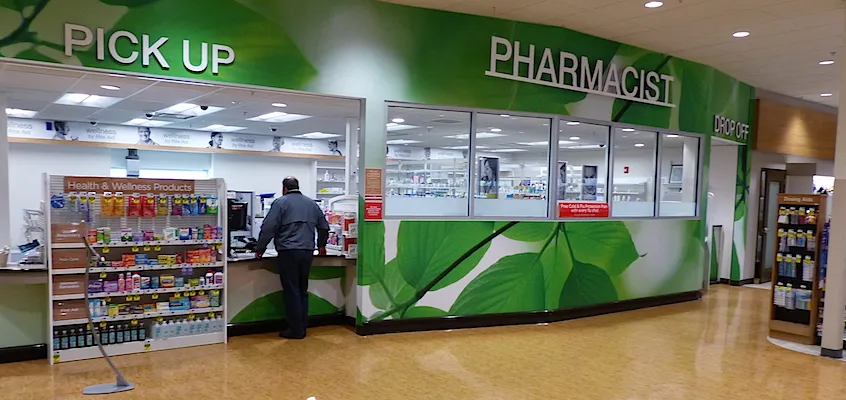
CAMP HILL, Pa. — Despite an uptick in total sales, lower drug reimbursement rates and script count trimmed profits at Rite Aid Corp. for its fiscal 2017 second quarter.
Rite Aid also said Thursday that it continues to expect its acquisition by Walgreens Boots Alliance (WBA) Inc., a $17.2 billion deal announced Oct. 27, to close by the end of 2016.
Earlier this month, WBA said it’s “actively engaged” in talks with the Federal Trade Commission and estimated that it would have to divest between 500 and 1,000 Rite Aid and/or Walgreens stores to gain antitrust approval for the transaction. The boards of both companies and Rite Aid shareholders have approved the agreement.
For the second quarter ended Aug. 27, Rite Aid’s sales totaled $8.03 billion, up 4.8% from $7.66 billion a year earlier.
Retail pharmacy segment revenues declined 2.4% to $6.49 billion from $6.65 billion, mainly due to decreased same-store sales, the company said. Pharmacy services segment sales, primarily from the EnvisionRx pharmacy benefit management subsidiary, were $1.63 billion for the quarter versus $1.07 billion a year ago, which represented less than a full quarter of ownership following Rite Aid’s acquisition of the PBM on June 24, 2015.
Second-quarter same-store sales were down 2.5% year over year, reflecting a 0.1% uptick in the front end and a 3.6% decline in the pharmacy. Rite Aid said comparable pharmacy sales were negatively impacted by 101 basis points from introductions of new generic drugs. Prescriptions filled decreased 1.8% on a same-store basis from a year ago. Prescription sales represented 68.5% of total drug store sales in the quarter.
“In the second quarter, we continued to drive positive results in our pharmacy services segment, which includes our EnvisionRx PBM, and had strong performance in our front-end business,” Rite Aid chairman and chief executive officer John Standley said in a statement. “We also saw improvements in prescription drug costs, but these improvements were more than offset by the challenging reimbursement rate environment, which we expect to continue through the remainder of the fiscal year.
“Heading forward, we will remain focused on operating our business as efficiently as possible while pursuing key growth opportunities, such as our flu immunization campaign and converting additional stores to the Wellness format, which continue to perform well and now represent nearly half of our chain,” Standley added.
On the earnings side, Rite Aid posted net income of $14.8 million, or 1 cent per diluted share, in the fiscal 2017 second quarter, down from $21.5 million, or 2 cents per diluted share, a year earlier. Rite Aid attributed the decrease primarily to a higher LIFO charge and a declined adjusted net income, partially offset by a $33.2 million loss on debt retirement in the prior year from the redemption of the company’s 8.00% senior secured notes.
Adjusted net income for the second quarter came in at $35.5 million, or 3 cents per diluted share, versus $58.7 million, or 6 cents per diluted share, in the year-ago period. The decrease in adjusted net income stemmed from declined adjusted EBITDA (earnings before interest, taxes, depreciation and amortization), partially offset by lower income tax and interest expenses, according to the company.
Adjusted earnings per share were in line with Wall Street’s forecast. Analysts, on average, had projected adjusted net earnings of 3 cents per share, with estimates ranging from a low of 1 cent to a high of 4 cents, according to Thomson Financial.
Adjusted EBITDA totaled $312.7 million, or 3.9% of revenue, in the second quarter, compared with $346.8 million, or 4.5% of revenue, a year ago. Rite Aid said the decline reflects a $51 million decrease in the retail pharmacy segment from lower gross profit and higher selling, general and administrative (SG&A) expenses. Gross profit fell because of lower pharmacy gross profit, partially offset by a rise in front-end gross profit, the company reported. Pharmacy gross profit decreased because of lower reimbursement rates and script count, partially offset by improvements in prescription drug costs, Rite Aid said.
An increase of $16.8 million in pharmacy services segment adjusted EBITDA partially offset the adjusted EBITDA decline in the retail pharmacy business, according to Rite Aid. The company said the gain reflected strong operating results in the current year and the fact that the PBM unit’s results don’t cover a full quarter’s ownership of EnvisionRx.
In the second quarter, Rite Aid opened three stores, acquired one store and closed 14 stores. The drug chain also relocated six stores and remodeled 85 stores, bringing the total number of its Wellness format stores to 2,214. As of Aug. 27, Rite Aid operated 4,550 stores in 31 states and the District of Columbia. The company also opened 10 RediClinic in-store health clinics during the second quarter, lifting overall clinic locations to 90.









